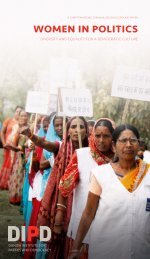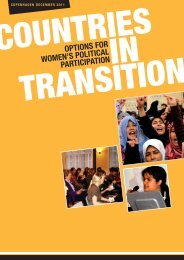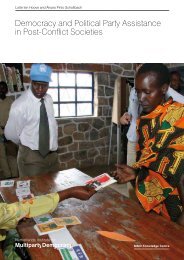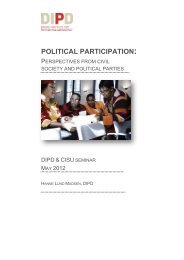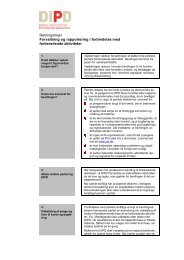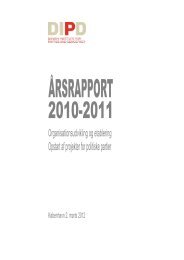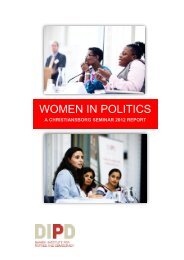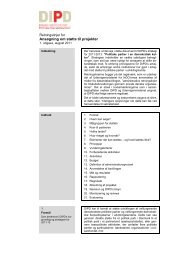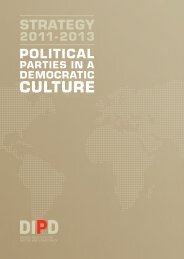Political Parties in Africa: Challenges for Sustained Multiparty
Political Parties in Africa: Challenges for Sustained Multiparty
Political Parties in Africa: Challenges for Sustained Multiparty
You also want an ePaper? Increase the reach of your titles
YUMPU automatically turns print PDFs into web optimized ePapers that Google loves.
Table 5.3: Legally-mandated quotas <strong>for</strong> women <strong>in</strong> <strong>Africa</strong>n<br />
countries<br />
Country Percentage<br />
of women <strong>in</strong><br />
legislature<br />
Legal provision<br />
of quota <strong>for</strong><br />
women<br />
Niger 11.5 Elected<br />
Nom<strong>in</strong>ated;<br />
unicamera<br />
Somalia Transitional<br />
National Government<br />
Quota Year quota<br />
<strong>in</strong>troduced<br />
10%<br />
25%<br />
2000<br />
10.0 Women-only lists 10% 2001<br />
Sudan 9.7 Reserved seats 9.7% 2000<br />
Swaziland 10.8 Upper house:<br />
Executive<br />
appo<strong>in</strong>tment<br />
28% 2003<br />
International Idea<br />
Source: Tripp, Aili Mari, ‘Legislative Quotas <strong>for</strong> Women’, <strong>in</strong> Mohamed Salih (ed.), <strong>Africa</strong>n Parliaments<br />
Between Government and Governance (New York: Palgrave Macmillan, 2005), p. 51.<br />
In the case of the party-mandated quota (see Table 5.4), it is clear that the majority<br />
of parties did not comply with what they have promised <strong>in</strong> respect to women<br />
representation and none of them has a woman president, secretary general or chair<br />
of a political party.<br />
Party Structures and Internal Organization



